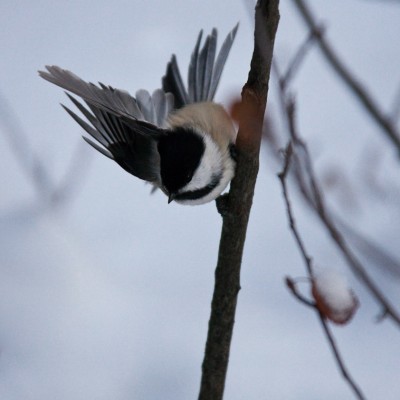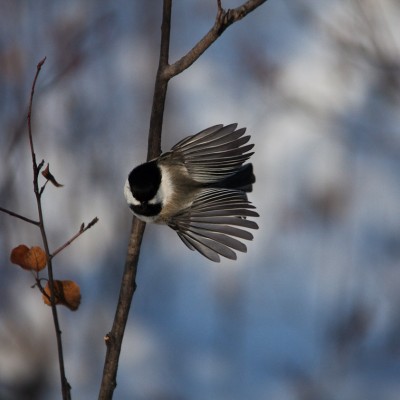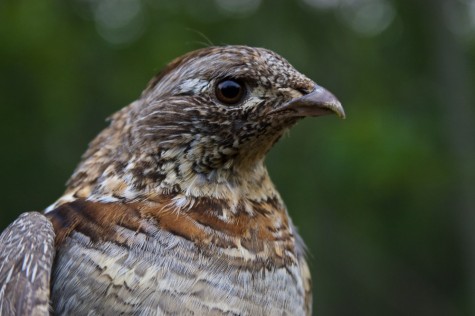I have been settling into a new routine, having started a new work contract in the new year, and part of this routine often includes walking through Edmonton’s beautiful Whitemud Ravine during my lunch break. The chickadees in this park have become accustomed to humans, and will come in close to see if you’ve brought them anything. I couldn’t resist taking a couple photos of them, and the ones I liked best were always just before they took off. I set a high enough shutter speed to catch the details of their feathers, and hoped for the best. Whenever I tried to catch one as it took off, I got a picture of a bare branch—I was too slow. By the time I could react, the bird was gone. I had to watch through the viewfinder and wait until I thought the bird was going to jump. Let’s just say it’s a good thing I’m shooting digital…
|
||
|
Here’s another short video clip of this porcupine I came across while out photographing along the North Saskatchewan River in the Strathcona Science Park. He (or she) was pretty small, maybe about the size of a beach ball, and was not going anywhere–if I moved too suddenly he’d pause from his eating, but he never left his spot. It’s hard to imagine how a porcupine can get enough nutrition out of the dried grass and seeds that he’s eating here to be able to survive the kind of cold that we’ve been getting lately, but I guess they do. You can push the fullscreen button (four outward arrows at the bottom-right of the video) to view it larger, or follow the link to watch a high-definition version at vimeo.com. 
This past year I upgraded my camera to the Canon 5DmkII, it’s a terrific camera that I’m very happy with, and one of the neat tricks it does is shoot high definition video. I don’t shoot too much video—I’m a stills photographer at heart, regardless of what the camera can do—but it is fun to try once in a while. I took this short video this past week during the cold snap—it shows a small flock of Common Goldeneye (Bucephala clangula) ducks swimming in the river then taking off and flying, landing again a ways upriver. The ducks dive briefly under the water surface a couple of times before flying—my best guess is that they’re “de-icing” their wings (it was about -35° C that morning). You can push the fullscreen button (four outward arrows at the bottom-right of the video) to view it larger, or follow the link to watch a high-definition version at vimeo.com. 
I don’t make many wildlife photographs, but this one I couldn’t pass up. I took this photo while working at the Beaverhill Bird Observatory near Tofield. I must admit that while this is a wild Ruffed Grouse, he wasn’t particularly free at the time of this photo. One of the things that I love about banding birds is getting to see them so close. At this range, even the drabbest sparrows (and grouse) are full of subtle detail, pattern and colour. I like how this photo captures some of those close-up details that are normally missed at regular grouse-viewing distances. It was a treat to catch this bird, and I’m glad to have this photo as a reminder. 
|
||
|
Copyright © 2009-2025 Jonathan Martin-DeMoor |
||



